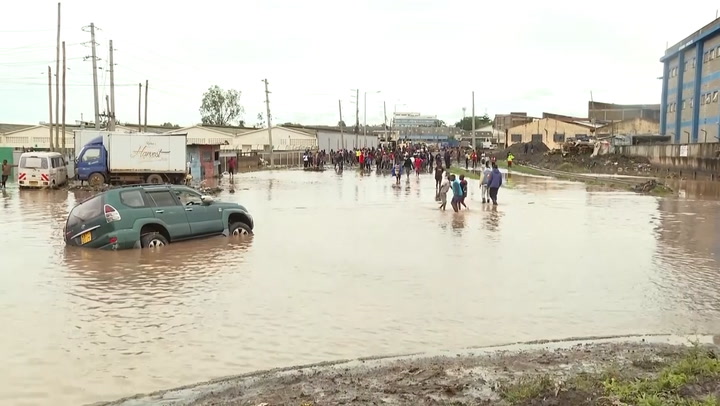
East Africa Faces Devastating Floods, With A Growing Death Toll From Burundi to Kenya
The floods in East Africa have particularly affected Burundi, which has led to a request for international aid.
Burundi has to ask for help from abroad to deal with the aftermath of devastating floods that are occurring due to severe rains in several parts of East Africa.
The port of Bujumbura has been flooded by Lake Tanganyika’s rising waters, severely hurting Burundi’s economic sector that is mostly dependent on international funding.
Martin Niteretse, the interior minister, called for coordinated action to assist those who are impacted.
“We are releasing this statement to request that our development partners work in tandem with the government of Burundi to provide aid to all those impacted by these calamities. The minister stated, “We require that assistance.”
approximately 203,944 people experienced flooding between September and April 7, resulting in the destruction of 209 classrooms and approximately 19,250 dwellings. Violet Kenyana Kakyomya, the U.N. resident coordinator in Burundi, announced that the number of internally displaced people has increased by 25% and now exceeds 98,000.
With 80% of its people working in agriculture, Burundi is one of the world’s poorest countries. It has bizarre spectacles like game rangers using canoes to navigate the flooded Rusizi National Park. Flooding has also destroyed important roads, such as Bujumbura’s Boulevard du Japon.
Experts in climate change blame the flooding on severe weather linked to the El Niño phenomena.
The University of Burundi’s Jean Marie Sabushimike, a disaster management specialist and geographer, highlights how inadequate land-use planning exacerbates flood-prone locations.
“It has to be stated clearly that Burundi, like other nations in the area, is affected by climate change in relation to these floods.”
The rising levels of Lake Tanganyika have caused the Kanyosha river to flood, causing damage to homes in Bujumbura. Some people have been unable to go or return to their homes.
Kenya, meantime, is dealing with its own flood disaster, which has affected over 100,000 people and resulted in 35 deaths since mid-March. As rivers overflowed their banks and caused flooding in the nation’s capital, Nairobi, officials issued a warning to residents near the Nairobi River to evacuate to higher ground and advised them not to travel on flooded highways.
There have been reports of flooding and mudslides in western Kenya, and in the north, floodwaters on a bridge carried a bus away. The problem is expected to worsen as Kenya’s meteorological authority predicts further rainfall peaks this week.
All Categories
Recent Posts
Tags
+13162306000
zoneyetu@yahoo.com



